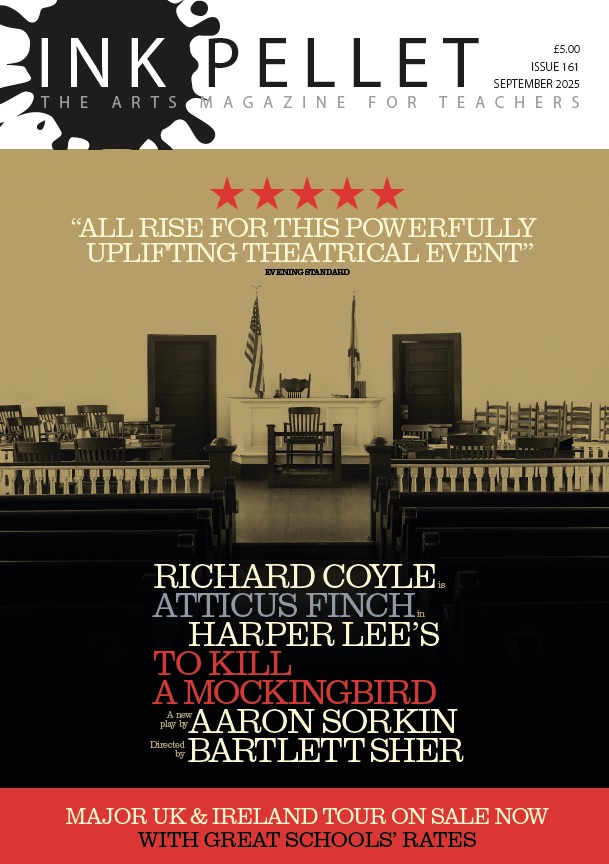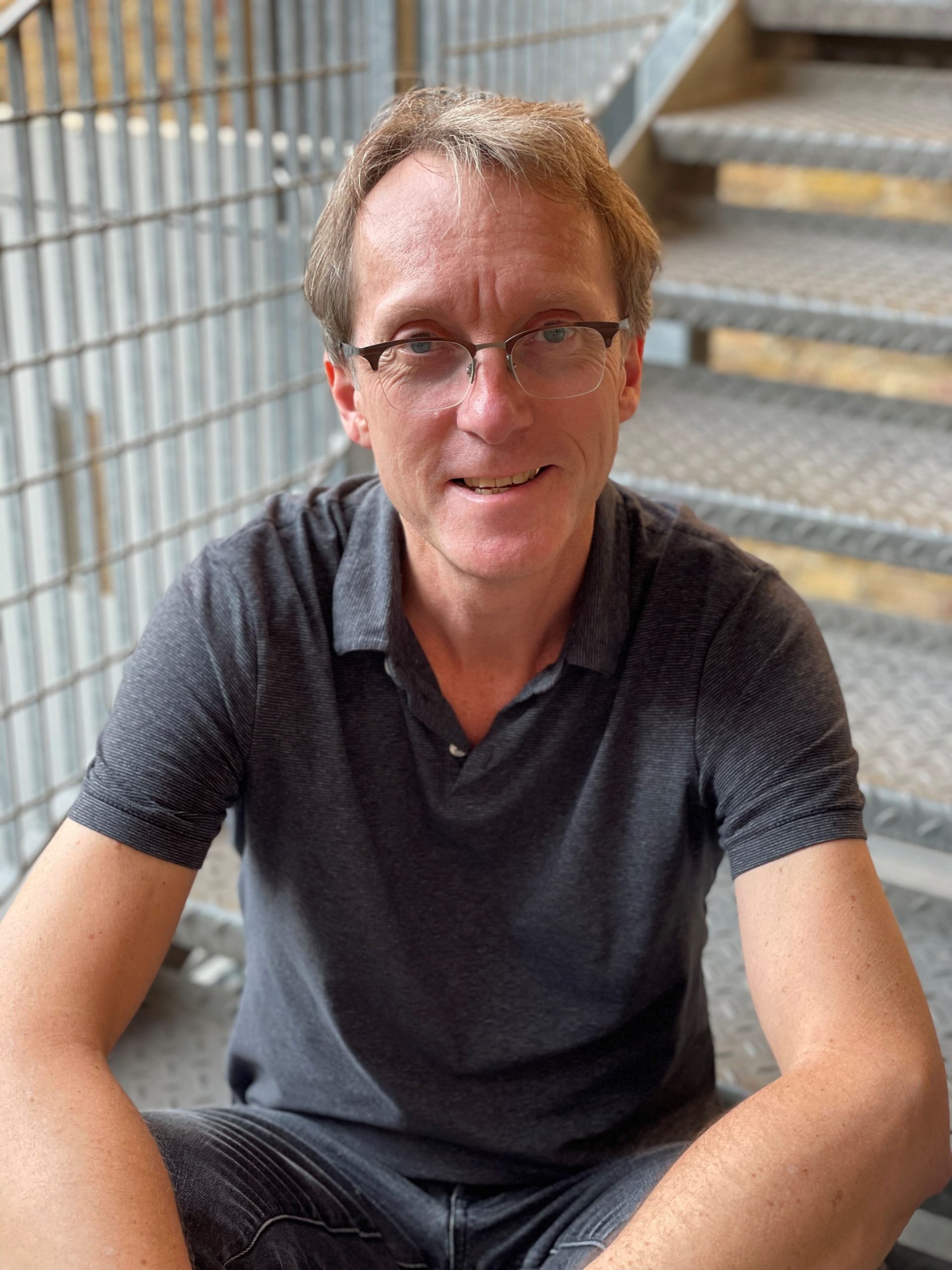Susan Elkin paid a visit to Half Moon theatre in London’s East End to chat with CEO Chris Elwell about their extensive education outreach and innovative theatre programmes.
Half Moon Theatre sits in the heart of Limehouse in the London Borough of Tower Hamlets, spitting distance from the DLR and mainline station. Formerly a pretty rundown area, it is now gradually being redeveloped.
Chris Elwell, director/CEO and I are chatting over cups of tea in the light, airy first floor foyer and it’s busy because this is one of the theatre’s vibrant, long-established Careers in Theatre days. Over a week, ten local secondary schools – all from Tower Hamlets which partly funds the scheme – bring Year 9 and 10 students to study a short piece of text in development. In four groups (stage management/PR, design, lighting and acting) they work out how they will stage the extract at the end of the day.
As we sit there, a splendid piece of set comprising a large wooden frame from which are suspended beautiful gold foil tendrils is carried though. A few feet from us, marketing manager, Stephen Beeny is helping a student to design a poster. In another corner three students are working earnestly with a freelance practitioner. The rest are downstairs in various studios. Yes, there’s a lot going on.
“Teachers love this scheme” says Chris, who has been in post for 25 years, “because it enables them to stand back and observe their pupils learning and they tell us that’s extremely useful. There is also a sense of continuity because the extract they’re working on is commissioned for 2023 so these students will be able to come back and see it in full next year.”
Chris explains that Half Moon Theatre is supported by Arts Council England as a National Portfolio Organisation (NPO). “That enables us to tour our shows nationally, often in co-production with other companies” says Chris, telling me that he and his colleagues – eight staff and around 140 freelances, some of them almost full-time – are slightly anxious about the forthcoming round of funding cuts. “20 million pounds is coming off the budget and those cuts have got to fall somewhere. These are uncertain times.” he says soberly.
During the year 2021/22, Half Moon Theatre, which works with and for ages 0 – 18, staged 396 performances at Limehouse and on tour, with a total audience of 21,000 [See our review of Grandad Anansi on page 22. Ed] “We also delivered about 1,900 creative learning sessions with over 26,000 participatory engagements” says Chris.
It remains, however, often difficult to get young audience theatre taken seriously. Eight years ago a Lottery grant enabled Half Moon to buy the freehold of their building from the council and refurbish it substantially. An important part of that was to reclaim the name Half Moon Theatre without the “young people’s theatre” tag. The name is now dramatically displayed atop the former Victorian Limehouse Board of Works whose frontage is now all repaired and looking lovely in the autumn sunshine. The name goes back a long way, incidentally because there were two earlier buildings where actors such as Frances de la Tour cut their teeth. Chris shows me a fascinating row of framed photographs along the wall in the basement which detail the whole history.
“We are doing exactly the same sorts of things as, say, the Almeida or the Arcola. We are not inferior” says Chris patiently. “It’s simply that our focus is on under 18s but funding systems and so on often don’t recognise work for young people.”
So how did Chris get into all this in the first place? He chuckles, takes a breath and then says: “Well, at school originally. But back in my day if you were interested in drama it had to be English at university so that’s what I went to Leeds to do – but it included lots of plays.” Finding that he didn’t want to act or direct he then did a PGCE and became a teacher of drama and special needs. When I tease him by observing that’s actually what he’s still doing, he grins again and agrees with me.
Totally committed to access and inclusion and unhappy during the teacher strikes of the late eighties (“Although I totally got why they were doing it. Of course I did”) Chris gradually realised that Young Audience work – now known as Applied Theatre Practice – was something you can do as a job. So he went to work for a ballet company where he became head of department, piloted a new way of working and developed an understudy programme which, among other things, toured a production of The Winter’s Tale to East London boroughs.
“That led to developing working relationships with drama students and soon I was hired by Central School of Speech and Drama to launch its new degree in drama education. We used to send students out on placement. One of the placement providers was Half Moon – which was clearly in trouble.”
He applied for the job, although sorry to leave Central, and has clearly rescued the organisation with flair although he detests the word “I” and tells me several times that Half Moon is a “we organisation”. He says: “Everything which has been achieved is the result of teamwork and collaboration.”
One of Chris’s bugbears is the phrase “hard to reach audiences”. He insists: “We never use that vocabulary. Of course there’s no such thing. You simply have to go out and find them. That’s why we work in community spaces. We’re a gateway. This is where access begins. Once people have met us and worked with us then they might come here to the building. It’s always those community groups which inform the stories we tell – and those stories naturally embrace socio-economic issues, race, disability and every other aspect of life.”
Chris and his colleagues have worked hard to develop the Half Moon building as a community space too. There’s a little garden at the back with picnic tables and a very interesting photographic display of local then-and-now photographs taken by a school group as a project. Elsewhere inside the building are chalk boards for anyone to play with. “They’re totally democratic” says Chris with a twinkle. “You don’t need IT skills or a device – just a piece of chalk.” There’s seating at various levels, books to look at, artwork and lots more.
In the auditorium Chris proudly shows me the theatre’s new totally flexible seating. “Ian McKellen paid for that” he says. “He’s such a nice man – lives just round the corner.” Meanwhile, across the performance space, lots of excited, very committed students are busy putting the finishing touches to their mini production which will be shared within the hour.
Half Moon Theatre functions as a registered charity, which means it has to have a viable working model with surpluses to feed back. And the work goes on all day almost every day. There are, for example, eight youth theatre groups, about a quarter of whose 200 members have some sort of disability or additional need. The Creative Play programme works with families to support vulnerable children, Dramatic Maths does what it claims (at KS2) and Dramatic Science is in preparation. There’s an intervention programme for children likely to disengage during transition to secondary school and a post-18 paid training scheme – and these are just examples.
It’s all very current too. Another concept Chris dislikes is emphasis on “future audiences”. He asserts: “Those audiences are here now. That’s what we’re concerned with.”
And none of this is to forget Half Moon’s core work of staging high-quality shows. In passing, Chris tells me that Half Moon pays well over minimum rates because it wants good actors and other creatives. “At present we have four national tours – some of which are co-productions” says Chris. “And at the same time about 12 companies are bringing in their shows to stage here. Of all the work at Half Moon about a third are our own shows and these all tour. Grandad Anansi for example did only six shows with us but 33 on tour.”
Chris still directs one show a year himself. “I do a lot of mentoring and teaching, so it’s important that I’m still seen to be active and credible,” he explains, adding that Half Moon usually gets an Offie (Off West End Theatre Award) about once a year and it’s often for his show. “So that helps the young people take me seriously too!” says this warm, ageless man without a shred of false modesty. The most recent occurrence of this was for Dust in February 2022.
I’m sure all readers of Ink Pellet will join me in the fervent hope that Half Moon Theatre’s ACE funding is renewed so that Chris and his team can forge on with their fine, innovative far-reaching work.



